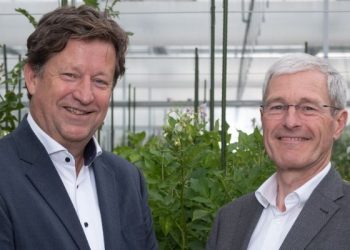Potatoes have emerged as a vital staple crop in China, serving not only as a primary food source but also as a valuable commodity and livestock feed. In recent years, various government departments across the country have intensified their political support, fostering the development of the entire production chain and transforming small-scale potato farming into major industries.
This announcement came to light during a press conference held by the Ministry of Agriculture and Rural Affairs on the 8th of this month. The conference shed light on the current state of affairs in China’s potato industry, as presented at the 2023 Chinese Potato Conference held in Dingxi.
Tan Ke, Director of the Marketing and Information Technology Department at the Ministry of Agriculture and Rural Affairs, emphasized that the development of the potato industry holds immense significance for ensuring national food security, consolidating and expanding poverty alleviation efforts, and contributing to the rejuvenation of rural areas. In recent years, China’s potato cultivation area has stabilized at around 70 million mu (approximately 4.67 million hectares), with production reaching nearly 90 million tons, representing roughly a quarter of global production and consistently ranking as the world’s top producer.
Simultaneously, production levels have been increasing year by year, while the production chain has been fortified and expanded. Over the past decade, fresh potato production per acre has increased by over 200 kilograms, reaching approximately 1,290 kilograms. The scale of major production zones in the northwest and southwest regions has also seen substantial growth. The Ministry of Agriculture and Rural Affairs has established a technological system for potato cultivation to conduct research and develop key technologies relevant to all stages of the production chain.
More than 70% of China’s potatoes are grown in impoverished regions. According to Tan Ke, through the development of order-driven industries, purchases at guaranteed prices, the creation of leading enterprises, cooperatives, and farmers’ associations, relevant departments are guiding enterprises toward establishing mechanisms that link benefits to planting enterprises. This has allowed farmers to increase their income by more than 200 yuan per mu.
“From an international trade perspective, the import and export of potatoes in China have steadily grown, maintaining a surplus in recent years. Mainly, exports consist of fresh potatoes and frozen french fries, while imports are primarily potato starch,” stated Sui Jianfei, a researcher at the Institute of Vegetables and Flowers of the Chinese Academy of Agricultural Sciences. He highlighted that the potato industry offers broad prospects for development but also faces challenges stemming from adverse factors such as climate change.
Sui Jianfei noted that the next step involves breeding high-quality, high-yield, and multi-resistant varieties through scientific and technological innovations. This includes promoting the use of environmentally friendly and efficient production technologies, capitalizing on opportunities for the rapid development of processed potato products, and developing environmentally friendly, nutritious food suitable for various consumer groups and taste preferences. To modernize the industry and increase plant cultivation income, deep processing should be encouraged.
It’s worth noting that the Chinese Potato Conference in Dingxi has been held for 14 sessions since 2008 and serves as a crucial platform for showcasing potato products, conducting economic and trade negotiations, and attracting investments. This year, the conference will take place from September 15 to 17 in Dingxi, Gansu Province, fully demonstrating new technologies, processes, and products. Additionally, a forum on the healthy and sustainable development of the potato industry, investment attraction, and other events will be held in conjunction.








